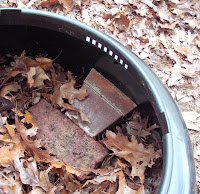Let me state at the outset:
I love White Flower Farm. They
are the class act of mail-order gardening and their Litchfield, Connecticut headquarters
contains, without question, some of the finest display gardens I have ever seen
– and I have seen a lot of them. So,
when White Flower Farm sends me catalogs and emails, I read them. I do so as much for the writing style (both
friendly and learned) as well as for the breadth of uncommon plants being
offered.
 |
| This is what our jasmine should look like in January (photo from White Flower Farm) |
Two weeks ago, I received an emailed offer from them that
was too good to pass up: a jasmine plant
(Jasminum polyanthum), with buds
already set, that was both attractively priced and the purchase of which would
support the Massachusetts Horticultural Society. I pushed the ‘buy’ button.
The plant arrived a few days later. White Flower Farm knows how to package a live
plant for shipment: an oblong box held the pot in such a way that, irrespective
of whether UPS acknowledged the ‘this side up’ plea, the potting mix would stay
in place and the plant would be undamaged.
The plant’s tendrils were cushioned (though one arrived broken, which is
still a very good survival rate). Best
of all, the plant had hundreds of tiny buds that will lead to a beautiful and
fragrant display in January and February.
And, inside was a complete booklet of care
instructions. This is where things began
to get complicated.
According to the booklet, in order to promote blooming, the
jasmine plant needs to spend the next month in a very unusual environment. It needs a) “a cool place” with b) and c) “bright,
indirect light”. We are fortunate to
live in a home with 64 windows, and that excludes skylights. But finding a location that met all three
criteria was going to be tricky. According
to the video on the WFF
website, our jasmine should be kept in a room “between 50 and 60
degrees”. We tend to keep most parts of
our house at 65 degrees in the winter, which is cool by most homeowners’
standards, but above the level specified.
Some exposures get bright sun, but we eschew curtains in those rooms
specifically because we want the solar heating benefits.
We finally settled on our master bathroom, which drops to 62
degrees during the day, has a large, triple window, and which faces northwest
and so gets no direct sunlight between November and March. Of course, we’re only in that room for a brief
period each day, but we’ll cross that particular bridge when the plant starts
flowering.
If finding a proper place for the plant while it’s getting
ready to flower is problematic, the real high-maintenance part of its ownership
comes once the blooming cycle is done.
“After
bloom, give your plant at least six hours of direct sun and normal room
temperatures.” Check. We can definitely do that. We have lots of windows with direct sunlight.
“When
the danger of frost has passed, set the plant outdoors for the summer, shifting
it gradually from a shady spot to full sun.”
OK, we’ll put it in our screened porch in May. Sometime in June, we’ll let it spend a few
hours a day on the back deck. Maybe I’ll set a timer. In July, it moves to the deck full time. Maybe.
“To
encourage the formation of flower buds for next winter, be sure your plant
experiences the cooler temperatures and shorter days of early autumn. The plant needs 4-5 weeks of nighttime
temperatures between 40° and 50°F, plenty of sunlight and the complete absence
of artificial light after sundown.”
 |
| Next spring, the jasmine goes out on our screened porch with the rest of the houseplants. No special treatment thereafter! |
The jasmine wants what? Our cat requires less maintenance than this plant. We have very little control over the
nighttime temperatures around here. We
can get a frost in September. “Plenty of
sunlight” rules out the screened porch which provides some retained heat but
fails the sunlight test. As to the ban
on artificial light, I’m at a complete loss. Maybe one of those birdcage covers
at sundown?
Because I have an investment in it and I happen to love the
smell of jasmine, I’m going to pamper this plant for the next month. With luck and a little TLC, January and
February will include a sweet, heavenly scent around our house. Come May, we’ll pop the jasmine out onto the
screened porch with our other houseplants for a spring and summer of leisure.
But after that, it gets no special treatment. It lives by the house rules.
(December 2012 update: To bring the story full circle, we kept the jasmine on our screened porch until mid-September; then put it in our basement, which gets low light through a bank of windows and stays at a relatively constant 55 degrees. The jasmine is covered in buds as this is written and is coming 'upstairs' for the holidays.)
(December 2012 update: To bring the story full circle, we kept the jasmine on our screened porch until mid-September; then put it in our basement, which gets low light through a bank of windows and stays at a relatively constant 55 degrees. The jasmine is covered in buds as this is written and is coming 'upstairs' for the holidays.)






























